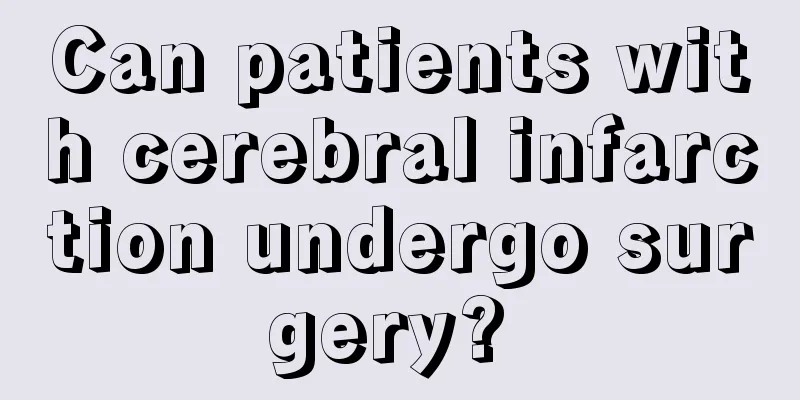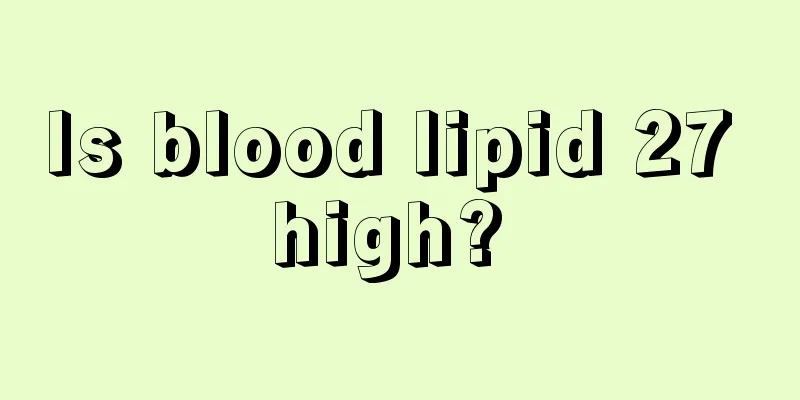Can patients with cerebral infarction undergo surgery?

|
Whether a patient with cerebral infarction needs surgery actually depends on the patient's condition. It does not mean that surgical treatment should be performed as soon as cerebral infarction is discovered. In fact, the purpose of surgical treatment is to restore blood circulation to the ischemic part of the brain. However, if the patient's own condition does not allow it, it should not be forced. 1. The purpose of surgical treatment of cerebral infarction is to restore blood circulation in the ischemic part of the brain. The surgical methods include intracranial and extracranial arterial anastomosis, intracranial and extracranial arterial bypass grafting, intracranial transplantation of the greater omentum, pedicled temporal muscle and superficial temporal artery fascia-cerebral cortex apposition, endarterectomy and endovascular dilatation of stenotic blood vessels. 2. Since October 1967, when Swiss doctors successfully performed superficial temporal artery-middle cerebral artery anastomosis using microsurgical technology, intracranial and extracranial artery anastomosis has been carried out in many countries around the world. Many hospitals in China have also performed this operation with success. 3. Intracranial transplantation of the greater omentum is a new approach to treat ischemic cerebrovascular disease. This type of surgery was first performed in China in 1980. It can improve local cerebral ischemia and prevent transient ischemic attacks from developing into complete strokes. If the cases are selected appropriately, most of the conditions can improve, and a few cases can even basically return to normal. 4. Carotid endarterectomy is not a commonly used SJ treatment method for progressive stroke. Postoperatively, the risk of cerebral hemorrhage may be increased due to the reconstruction of blood flow in the infarcted brain tissue and vascular rupture. In recent years, a small number of scholars have also selectively used carotid endarterectomy to treat progressive stroke patients with mild to moderate neurological dysfunction, but this method is not suitable for patients with severe neurological dysfunction or impaired consciousness. 5. It should be pointed out that although surgical treatment of cerebral infarction has broad prospects, the indications should be strictly controlled and perfect conditions should be met. At present, it cannot be used as a routine treatment for cerebral infarction. |
<<: What are the symptoms of a chalazion?
>>: What causes numbness in fingers?
Recommend
Drinking soy milk to remove fetal toxins is effective in this way
As we all know, fetal toxins have a great impact ...
Why do my hands feel hot after cutting chili peppers
I believe that everyone has cut peppers in their ...
What are the diagnostic criteria for fibroids
Many patients with fibroids do not know what the ...
What are the causes of bone cancer pain?
Bone cancer is a common and terrible disease. The...
What are the pros and cons of electric toothbrushes?
The electric toothbrush is not unfamiliar in our ...
What are the causes of lumbar edema
Lumbar edema is a common clinical symptom, which ...
What medicines should I take if I have ovarian tumor
Traditional Chinese medicine has less toxic side ...
What diseases can Wang Buhe cure
Wang Buhe is the inheritor of a national intangib...
Nine tips to stay healthy when using public toilets
Recently, the Popular Health Network published an...
What is the color of bile
Bile is a substance secreted by the human liver a...
How to treat gum atrophy?
The lower part of the teeth is covered by the gin...
What should I do if my eyes turn red after staying up late
In addition to affecting physical health, staying...
What to do if mouth ulcers and tongue blisters
Many people have experienced symptoms such as mou...
What symptoms can be checked for the diagnosis of prostate cancer
The incidence of prostate cancer is very high now...
Can berry tea relieve pharyngitis?
The problem of pharyngitis has caused great troub...









